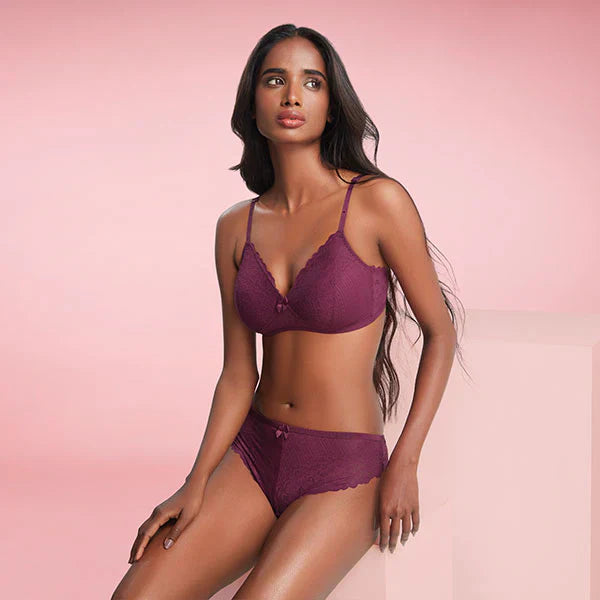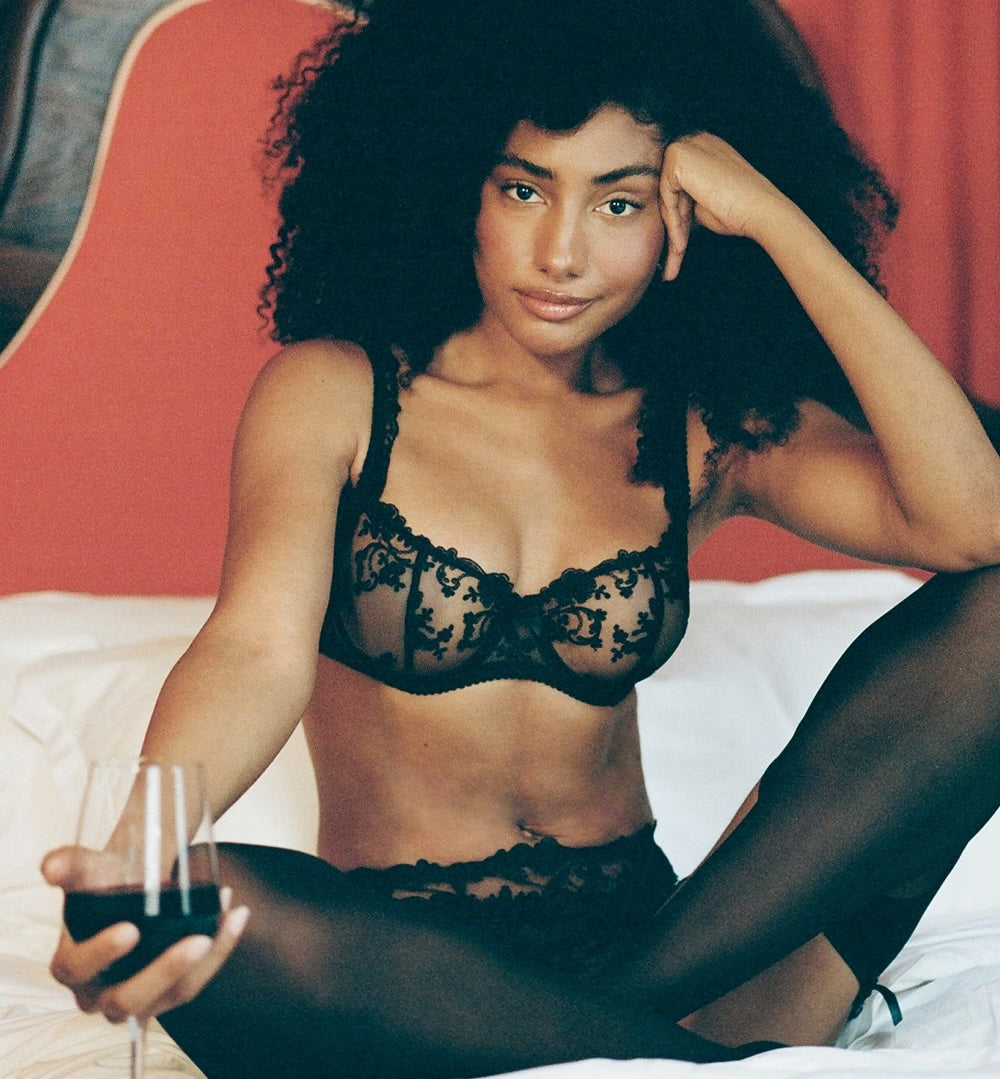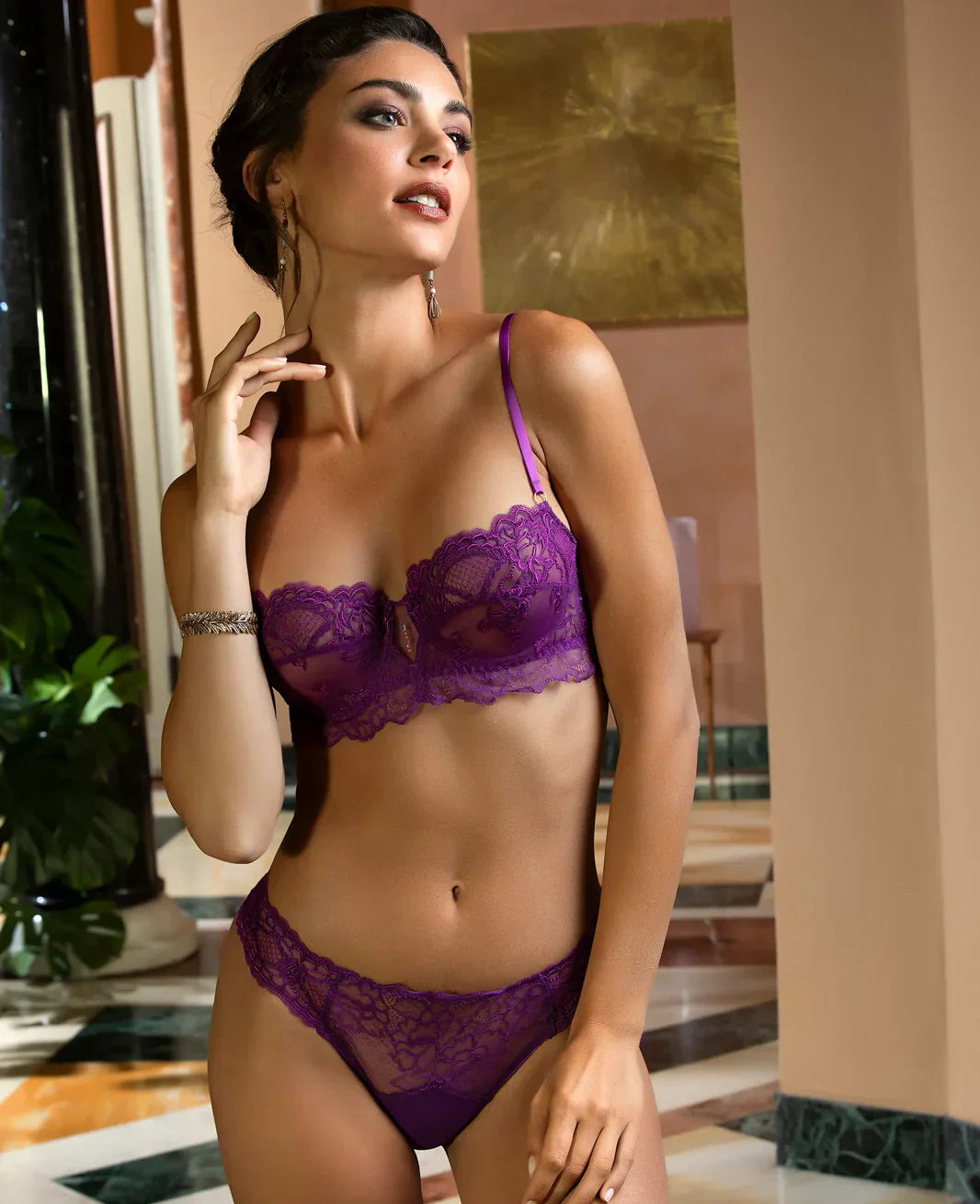Understanding History of Lingerie: An Expert Insight

Understanding history of Lingerie: An Expert Insight into Its History, Purpose, and Styles.
Lingerie is far more than a category of clothing; it is a sophisticated blend of functionality, aesthetics, and self-expression. Rooted in centuries of evolution, lingerie represents a significant segment of the fashion industry, embodying a unique balance between form and intimacy. But what exactly is lingerie, and why does it hold such a prominent place in wardrobes and cultural conversations?
What is Lingerie?
The term “lingerie” originates from the French word “linge,” meaning linen, and historically referred to undergarments made from fine fabrics. Today, lingerie is defined as intimate apparel designed primarily for women, including bras, panties, slips, camisoles, bodysuits, and nightwear. In this context, women's lingerie encompasses the evolution and significance of these garments, reflecting both historical changes and modern trends. While the term often implies sensuality, lingerie serves both practical and aesthetic purposes.
The Evolution of the Lingerie Industry
Early versions of lingerie were heavy, restrictive, and less comfortable compared to modern designs. The journey of lingerie began centuries ago as a functional necessity. Early examples include the Roman strophium (a band used to support the chest) and medieval chemises, which were a type of shirt serving as a foundational garment for hygiene under heavy outer garments. In the 16th century, the corset became iconic for its evolving design and its significant impact on fashion, shaping the body to meet societal ideals of beauty and dramatically altering a woman's figure. The Victorian eras, in particular, were known for elaborate, structured undergarments that reflected wealth and status, setting them apart from other historical fashion periods.
The 19th century marked a period of significant change in the evolution of women's underwear and silhouette trends, as fashion and material innovations influenced undergarment designs and societal perceptions. As restrictive corsets began to decline, bloomers emerged as a practical, loose fitting alternative promoted by women's rights activists like Amelia Bloomer in the late 19th and early 20th centuries, offering greater comfort and functionality. Differences in women's underwear became more pronounced over time, with styles and materials evolving to suit changing needs and preferences.
By the late 19th and early 20th centuries, the industrial revolution and advancements in textile production introduced lighter, more comfortable fabrics, giving rise to modern lingerie. The liberation of women in the 20th century saw the decline of restrictive corsets and the emergence of bras, panties, and slips designed for comfort, style, and individuality. New lingerie styles were created by innovative designers, marking pivotal moments in the history of undergarments. The introduction of cup sizes and adjustable bands in the early 20th century improved the fit of bras, accommodating a wider range of body types. The modern bra, developed from the early 20th century onward, became more functional and comfortable, symbolizing women's liberation.
World war events, particularly World War I and II, influenced lingerie materials and design, as shortages and changing roles for women led to new innovations. In the 1950s and 1960s, girdles played a key role in shaping the fashionable hourglass silhouette, often paired with bullet bras and petticoats to enhance a woman's figure.
Today, lingerie is celebrated for its ability to empower the wearer, offering options that range from everyday essentials to elaborate, artistic pieces.
Early History of Lingerie
The early history of lingerie is a captivating journey through centuries of changing ideals and evolving garments. In the 18th century, women’s lingerie was defined by restrictive corsets, hoop skirts, and shapeless garments that were all the rage among the upper classes. These undergarments were meticulously designed to create the coveted hourglass figure, with a small waist and accentuated hips. The introduction of metal eyelets in corsets allowed for even tighter lacing, making it easier to sculpt the body into the fashionable silhouette of the era.
During the Victorian era, lingerie became an essential part of every woman’s wardrobe. Many women wore multiple layers of undergarments, including petticoats, corsets, and stockings, all working together to create a structured and elegant appearance. These garments were not just about modesty, they were about shaping and defining a woman’s figure according to the style trends of the time. The history of lingerie in this period is a testament to the lengths women went to in order to achieve the ideal look, with each layer playing a crucial role in creating the desired effect.
Lingerie in the 20th Century
The 20th century marked a revolutionary shift in the lingerie industry, as women began to seek comfort and practicality alongside style. The early 20th century saw Mary Phelps Jacob invent the first bra using two handkerchiefs and a ribbon tie, offering a practical alternative to the restrictive corsets that had dominated previous eras. This simple yet ingenious creation paved the way for a new era in women’s lingerie, focusing on freedom of movement and a more natural silhouette.
As the decades progressed, the lingerie industry continued to innovate. The following decade introduced sports bras, providing support for women who wanted to participate in physical activities without the constraints of traditional undergarments. The 1950s and 1960s brought a new wave of sexy lingerie and push up bras, allowing women to make a bold fashion statement while embracing their femininity. With each new development, lingerie became less about restriction and more about celebrating the diversity and individuality of women’s bodies.
Key Features and Functions
-
Support: Lingerie provides essential support for the body. For instance, bras are engineered to support and shape the bust, with variations like underwire, bralettes, and sports bras catering to diverse needs.
-
Comfort: Advances in fabric technology have prioritized comfort without sacrificing style. Materials such as lace, silk, and microfiber ensure a luxurious feel while maintaining breathability. Modern styles like boy shorts have become popular for their versatility, comfort, and inclusive appeal, reflecting current trends in gender-neutral and androgynous fashion.
-
Aesthetic Appeal: Lingerie often features intricate designs, embroidery, and detailing that make it visually appealing, allowing the wearer to feel confident and stylish.
-
Self-Expression: Whether simple or extravagant, lingerie reflects personal style. It is a medium for self-expression, offering wearers the opportunity to embrace their identity, mood, or occasion.
Impact of New Materials
The evolution of the lingerie industry has been closely tied to the introduction of new materials, which have transformed both the look and feel of women’s underwear. In the 1950s and 1960s, the use of nylon and lace brought a delicate, feminine touch to lingerie designs, making them lighter and more alluring than ever before. Silk and cotton also became popular choices, offering softness and breathability that elevated the comfort of everyday bras and panties.
The arrival of Lycra in the 1970s and 1980s was a game changer, providing stretch and flexibility that allowed modern bras and underwear to fit a wider range of body shapes. Today, the lingerie industry continues to innovate with new materials like bamboo and modal, creating garments that are not only beautiful but also sustainable and comfortable. These advancements have made it possible for lingerie to be both a practical necessity and a luxurious indulgence, with endless options to suit every preference.
Lingerie as a Form of Self-Expression
In recent years, lingerie has emerged as a powerful form of self-expression for many women. With an ever expanding array of styles, from sexy lingerie to practical everyday underwear, women can choose pieces that reflect their unique personalities and boost their confidence. The lingerie industry has embraced body positivity, offering inclusive sizing and designs that cater to a diverse range of body types and needs.
Brands like Victoria’s Secret have played a significant role in popularizing this trend, making it easier for women to find lingerie that makes them feel beautiful and empowered. Whether it’s a bold push up bra, a comfortable sports bra, or a delicate lace bralette, modern lingerie allows women to celebrate their individuality and express themselves through their choice of undergarments.
Role of Lingerie in Shaping Women’s Fashion
Lingerie has long been a driving force in shaping women’s fashion, influencing not only what is worn underneath but also how outer garments are designed and styled. The transition from restrictive corsets to more comfortable and practical lingerie in the 20th century had a profound impact on women’s clothing, paving the way for new silhouettes and greater freedom of movement.
Designers have often drawn inspiration from lingerie, incorporating elements like lace, silk, and delicate trims into outerwear and evening wear. The influence of lingerie can be seen in everything from column dresses to modern styles that blur the line between underwear and outerwear. By creating garments that celebrate the female form, lingerie has helped redefine fashion and empower women to dress in ways that reflect their personal style.
Lingerie in Popular Culture
Lingerie has left an indelible mark on popular culture, becoming a symbol of allure, confidence, and style. Iconic moments, such as Marilyn Monroe’s unforgettable scene in “The Seven Year Itch,” have cemented lingerie’s place in the collective imagination, turning simple garments into cultural touchstones. Fashion magazines, editorial spreads, and runway shows frequently showcase the latest lingerie designs, setting style trends and inspiring women around the world.
The rise of social media has further amplified the influence of the lingerie industry, with brands and designers using platforms like Instagram to connect with customers and showcase new collections. From the silver screen to the digital age, lingerie continues to captivate and inspire, proving that it is much more than just an undergarment, it is a statement of confidence, creativity, and modern femininity.
Modern Trends in Sexy Lingerie
The lingerie industry has embraced diversity, inclusivity, and sustainability in recent years. Brands now cater to a broader range of body types, skin tones, and personal preferences. Modern women seek lingerie that reflects their values of comfort, style, and individuality, driving brands to innovate and offer more personalized options. Inclusivity has led to innovations like gender-neutral lingerie and extended sizing, ensuring everyone can find pieces that resonate with their needs.
Sustainability is another focus, with many brands opting for eco-friendly fabrics and ethical manufacturing practices. This shift reflects the modern consumer’s desire for products that align with their values.
Looking ahead, lingerie trends in the next decade are expected to further emphasize inclusivity and sustainability, continuing the evolution toward greater empowerment and self-expression.
Why Lingerie Matters
Lingerie is more than a functional necessity, it is a celebration of individuality and confidence. For some, it is an art form; for others, a daily comfort. Regardless of its role in a person's life, lingerie remains a testament to the intersection of fashion, function, and self-esteem.
In essence, lingerie is a powerful statement. Whether simple and understated or bold and extravagant, it reflects the complex and nuanced relationship between clothing, body, and self-perception. Its enduring appeal lies in its ability to adapt, innovate, and empower, making it a timeless element of fashion and personal expression.


